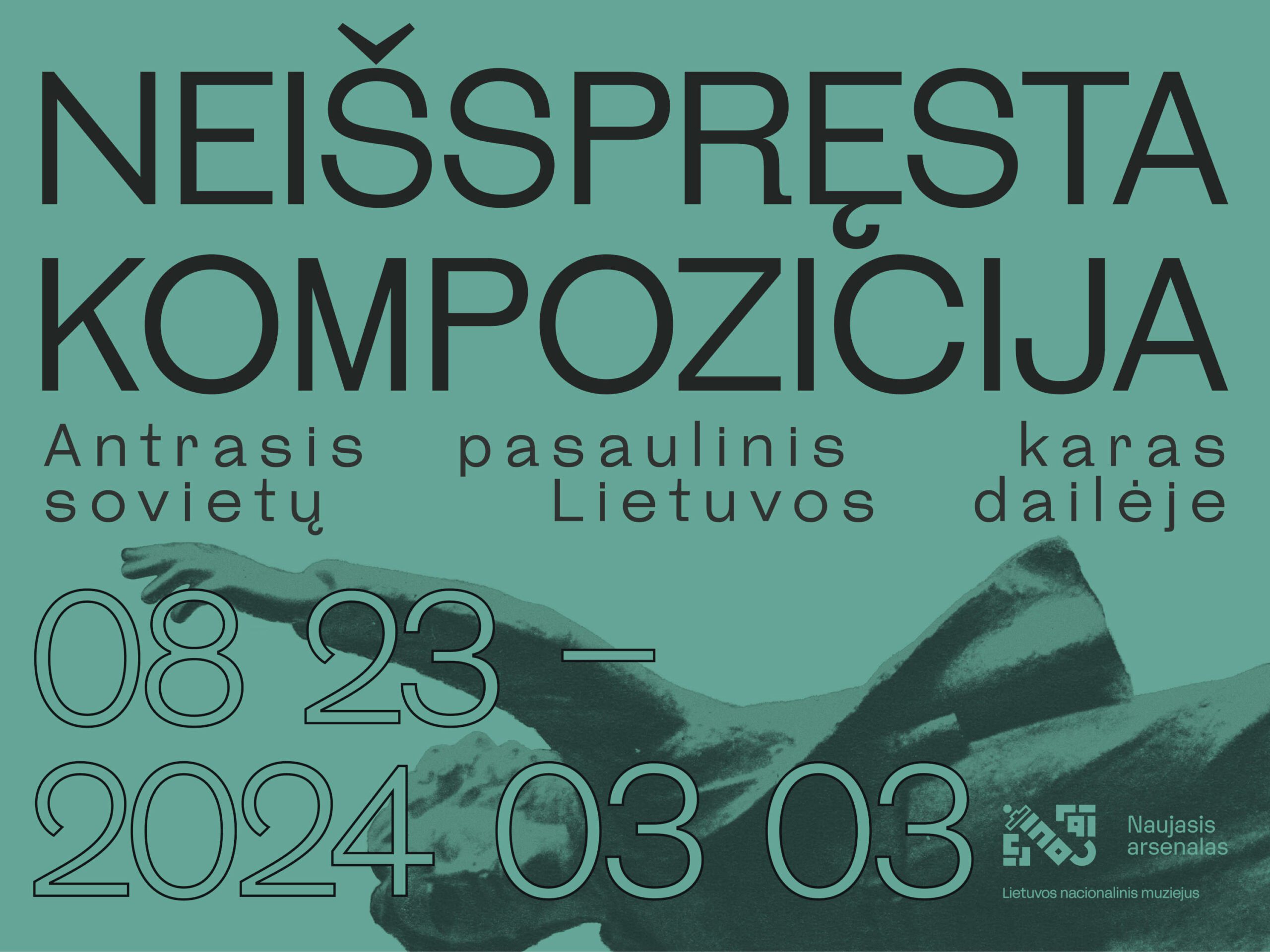Unresolved Composition. The Second World War in Soviet Lithuanian Art
Does the apparatus of censorship and propaganda imposed by the dictators of the 20th century continue to influence our times? Are the ideological clichés of the occupiers echoed in the rhetoric of today’s aggressors? The Kremlin’s attempts to destroy Ukraine oblige us to look back at the painful experience of the occupations and to rethink the imperial narratives that were introduced in the Soviet-occupied territories after World War II.
The label “Unresolved Composition” was a favourite one used by Soviet art censors to criticize the level of a given artwork or an interpretation that failed to tow the official ideological line. In the context of this exhibition, the phrase refers to the complex circumstances of artistic life in occupied Lithuania, the distorted accents of the Soviet-era historical narrative, and the conflicts of our own scarred memory. This exhibition deconstructs the visual propagandistic narrative of the “Great Patriotic War”, as it was embodied in the artworks of Soviet Lithuania.
The GPW narrative became a tool of Soviet colonization. Art was an important element for legitimizing occupation and facilitating Lithuania’s Sovietization. Monuments to the “liberation” battles waged by the Red Army and their heroes appeared in newly renamed town squares, exhibitions were dominated by canvases painted according to narratives dictated by the ideologues, the image of the “Great Patriotic War” was disseminated through book and magazine illustrations and propaganda posters, and GPW iconography became an obligatory part of an artist’s training.
To consolidate this narrative, the occupying regime devoted considerable attention to visual propaganda: the removal of symbols of independent Lithuania from the public space and the creation of pro-Soviet products. The exhibition reveals the main ideological accents of the GPW narrative, and the duality of the theme is illustrated by radically different artworks.
This exhibition is being presented in the main facility of the Lithuanian National Museum, the New Arsenal, which has been closed for renovation. Prior to 1968, when it housed the first exhibition of the then Soviet Lithuanian Museum of History and Ethnography, the New Arsenal served a military function for nearly two centuries. This landmark area of the capital city, depicted in some of this exhibition’s works, and the museum walls partially stripped for architectural research, conceptually complement the exhibition’s narrative and symbolically complete this period in the history of the New Arsenal.
The exhibition will be held in the New Arsenal (Arsenalo g. 1, Vilnius) until March 3rd, 2024.
Curated by Indrė Urbelytė, architecture by „Office De Architectura“, graphic design by Juozapas Švelnys.


